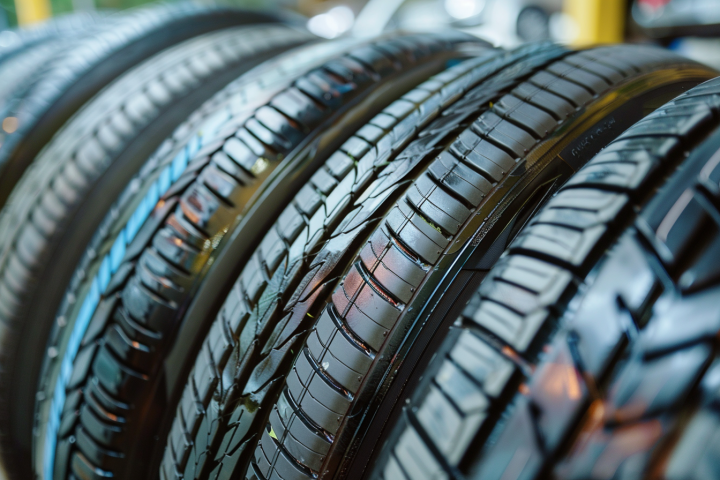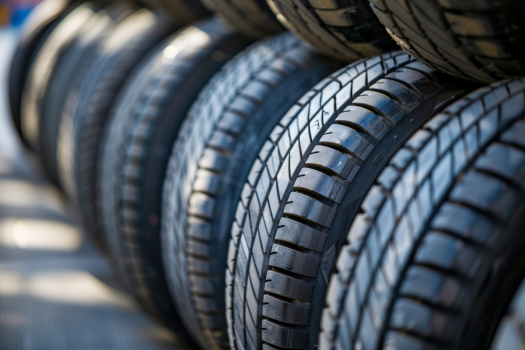Last Updated on April 25, 2024
Expert Tips for Buying Used Tires Without Compromise
Buying old tires, often considered cost-effective and ecologically friendly, is becoming more popular in various markets worldwide. This section examines the complexities of the second-hand tire market and investigates the tires’ dual appeal regarding cost and environmental impact.
Understanding the Market for Second-Hand Tires
The second-hand tire market is broad and complex, driven by various factors, such as rising new tire prices and increased awareness of environmental sustainability.
- Supply Sources: Used tires can come from various sources, including wrecked automobiles, tire sellers that accept old tires as trade-ins, and lease or rental car returns. Some are also imported from countries with stricter tire tread laws, where tires that are no longer permitted to be used in such countries have a long tread life.
- Quality and Safety Standards: The condition of these tires can vary greatly. Some used tires are nearly new, having been used for only a short period, while others are closer to the end of their usable life. Quality standards for second-hand tires are only sometimes regulated, meaning buyers must be knowledgeable or seek expert advice when purchasing.
- Market Dynamics: The demand for used tires is influenced by economic factors. In times of economic downturn, more vehicle owners opt for used tires to save money. Additionally, the rise of online marketplaces has made it easier for consumers to find and purchase used tires, broadening the market considerably.

The Appeal of Used Tires: Cost and Environmental Factors
The main attractions of buying used tires are the cost savings and the environmental benefits.
- Cost- Effectiveness: Cost is one of the most compelling reasons to buy second-hand tires. Used tires can be substantially cheaper than new tires, typically costing only a fraction of the price. This makes them an appealing option for budget-conscious clients who need to replace their tires but are reluctant or unable to pay the high prices for new tires.
- Environmental Impact: Purchasing used tires helps to reduce waste. Tires are a significant source of waste worldwide, and reusing tires in good condition extends their life and delays their introduction into the waste stream. This helps reduce garbage consumption and the energy and materials necessary to manufacture new tires.
- Sustainable Practices: The use of second-hand tires aligns with the principles of a circular economy, where products are reused and recycled to extend their life cycle. This approach is increasingly recognized as vital for sustainable living, as it reduces the environmental footprint associated with tire production and disposal.
Assessing Tire Safety
When it comes to buying used tires, safety is a necessary concern. Understanding how to assess tire safety is crucial to ensure that the tires you purchase will perform as expected and not pose a risk to you and your vehicle. This involves evaluating factors such as the age of the tires, tread depth, and signs of wear and tear. Tire safety assessment is critical to purchasing used tires and general maintenance. Tires are the only point of contact between your vehicle and the road, and their condition can significantly impact your vehicle’s performance and safety.
Age of Tires: How Old is Too Old?
The age of a tire plays a vital role in determining its safety. Tire rubber compounds degrade with time, resulting in lower performance and a higher risk of failure, regardless of tread depth.
- Manufacturing Date: The DOT (Department of Transportation) code on a tire’s sidewall indicates its age. The final four digits of this code represent the week and year of manufacture. For example, a code ending in “2519” means the tire was made in the 25th week of 2019.
- Recommended Age Limit: Many tire manufacturers and automotive organizations advocate replacing tires between six and ten years old, regardless of visual condition or tread depth. The rubber compounds worsen and lose efficiency, particularly in extreme weather conditions.
Tread Depth: The Indicator of Tire Health
Tread depth is a crucial indicator of a tire’s health and ability to perform safely, particularly in grip and water dispersion.
- Minimum Legal Limit: The legal minimum tread depth varies by country, but a common standard is 1.6 millimeters. Driving on tires with a tread depth below this limit is dangerous and illegal in many regions.
- Measuring Tread Depth: Tread depth can be measured using a tread depth gauge or by the wear indicators in the tire grooves. These indicators are small raised bars at the bottom of the tread grooves. When the tread is worn down to the level of these bars, it’s time to replace the tire.
Identifying Wear and Tear: Signs to Look Out For
Assessing a tire’s overall condition is crucial. Apart from tread depth, there are other signs of wear and tear to be aware of.
- Visual Inspection: Look for any cuts, bulges, or punctures in the tire. These can compromise the tire’s structure and potentially lead to a blowout.
- Uneven Wear: Uneven wear can indicate issues with wheel alignment, suspension problems, or improper inflation. It can also affect the vehicle’s handling and stability.
- Vibration or Noise: Excessive vibration or noise while driving can indicate internal tire damage, which may not be visible outside.
Assessing the safety of used tires is a multifaceted process that requires careful examination of various factors. By understanding the importance of tire age, tread depth, and signs of wear and tear, you can make a more informed decision when purchasing used tires and ensure your safety on the road.
Legal and Compliance Considerations
When purchasing used tires, it’s not just about assessing their physical condition; there are also legal and compliance considerations that buyers must be aware of. Understanding the regulations and standards for used tires and warranty and liability issues is crucial for making an informed and legal purchase. The sale and use of used tires are subject to various laws and regulations, varying by country or region. These regulations are implemented to ensure that the tires sold on the second-hand market are safe for use, thereby protecting consumers and other road users. Awareness of these legal aspects is essential for buyers to avoid potential legal troubles and ensure their safety.
Regulations and Standards for Used Tires
Different countries and regions have specific regulations governing the sale and use of used tires. These regulations often focus on ensuring that the tires meet minimum safety standards.
- Tread Depth Regulations: Many regions have laws specifying the minimum tread depth for used tires. For example, in many European countries, the minimum legal tread depth is 1.6 mm, while in some states in the U.S., it’s 2/32 inches.
- Age Restrictions: Some regions have regulations regarding the age of tires. For example, some countries discourage using tires over 5-6 years old, regardless of their tread depth.
- Safety Standards Compliance: Used tires must comply with transportation authorities’ safety standards. These standards may include requirements for tire strength, durability, and performance under various conditions.
Warranty and Liability Issues
When purchasing used tires, warranty and liability issues become particularly important. Unlike new tires, which generally come with manufacturer warranties, used tires may not offer the same level of assurance.
- Lack of Manufacturer Warranty: Used tires often come without the manufacturer’s warranty. The buyer may have limited recourse if the tires are defective or fail.
- Seller’s Warranty: Some used tire dealers may offer warranties or guarantees for a certain period or mileage. Buyers need to understand the terms of these warranties, including what is covered and for how long.
- Liability in Case of Accidents: If a used tire fails and causes an accident, the issue of liability can be complex. Depending on the circumstances, the seller of the used tire may be held liable, mainly if the tire was sold with known defects or did not meet legal safety standards.
Where to Buy Used Tires
Buying used tires can be cost-effective, but knowing where to buy them is crucial for ensuring quality and safety. This article explores the various options available for purchasing used tires, including trusted dealers and specialty shops on online marketplaces, and provides a guide to inspecting tires before purchase.
Finding a reliable source for used tires is essential to getting a good deal without reducing safety. While there are numerous places to buy used tires, not all sources are equal regarding the quality and safety of the tires they offer.

Trusted sources: Dealers and Specialty Shops.
One of the safest ways to buy second-hand tires is through trustworthy dealers and specialty tire stores. These sources usually have high requirements for the tires they sell and may provide some guarantee or warranty.
- Reputation and Reliability: Established dealers and businesses typically have a reputation to uphold and are more likely to be dependable regarding the quality of their tires. They frequently have professional staff who can offer advice and support.
- Quality Assurance: Many dealers test their tires to ensure safety and quality. They look for tread depth, indicators of uneven wear, and any damage that would jeopardize the tire’s integrity.
Online Marketplaces: What to Watch For
Online marketplaces have become a popular option for buying used tires. While they can offer a wide selection and competitive prices, there are certain factors to be careful of.
- Variability in Quality: The quality of tires available online can vary. Verifying the tires’ condition is more complicated when you cannot inspect them in person.
- Seller Reviews and Ratings: Check the seller’s reviews and ratings. Look for sellers with positive feedback and a good track record of selling automotive parts.
Inspecting Tires Before Purchase: A Step-by-Step Guide
Inspecting used tires before buying is crucial, whether from a local shop, a dealer, or online. Here’s a step-by-step guide to help you assess the quality of used tires:
- Step 1: Check the Tread Depth: Use a tread depth gauge to measure the tire tread depth. Ensure it meets the legal requirements and offers enough depth for safe driving.
- Step 2: Look for Even Wear: Uneven wear can indicate alignment issues with the car the tire was previously on, which might have caused internal damage to the tire.
- Step 3: Examine for Damage: Look for any visible signs of damage, such as cuts, bulges, or punctures. Also, check the sidewalls for cracks or signs of weathering.
- Step 4: Age of the Tire: Use the DOT code to determine the tire’s age. Older tires, even with good tread, might have compromised integrity.
- Step 5: Ask About History: Ask about the tire’s history. Information like the type of vehicle it was used on and how it was driven can provide insights into its condition.
Installation and Maintenance
Installing and maintaining old tires correctly assures their durability and safety. This section discusses the most critical parts of tire installation, including whether to hire a professional or do it yourself, how to maintain your used tires for peak performance, and when to replace them.
Introduction
The significance of properly installing and maintaining tires must be balanced. Proper installation ensures that the tires perform properly, while regular maintenance helps to extend their life and keep the vehicle safe.
Professional Installation vs. DIY: Pros and Cons
When it comes to tire installation, you have two main options: hiring a professional or doing it yourself. Each option has its pros and cons.
-
Professional Installation
- Pros: Professional installers have the right tools and expertise. They can ensure the tires are balanced and aligned correctly, which is crucial for safety and longevity. Professionals can also spot potential issues you might miss with your tires or wheels.
- Cons: The main downside is the cost. Professional installation will add to the overall expense of getting used tires.
-
DIY Installation
- Pros: The primary advantage is cost savings. If you have the necessary skills and tools, you can install the tires and save money.
- Cons: You can install the tires correctly with the proper tools and expertise. This can lead to safety issues, uneven tire wear, and a shorter lifespan.
Maintaining Your Used Tires for Optimal Performance
Proper maintenance is essential to getting the most out of your used tires. Here are some tips:
- Regular Inspection: Check your tires regularly for indicators of wear, damage, or other difficulties. This involves examining the tread depth, looking for cuts, bulges, or punctures, and ensuring the tires are debris-free.
- Proper Inflation: Keep your tires inflated to the manufacturer’s specifications. Underinflated or overinflated tires can cause uneven wear and lower fuel economy.
- Rotation: Regular tire rotation helps achieve consistent wear across all tires. This increases tire life and helps maintain your vehicle’s balanced handling.
When to Replace: Recognizing the End of a Tire’s Life
Knowing when to replace your tires is essential for your safety. Here are some indicators:
- Tread Depth: The legal limit for tread depth is usually 1.6 millimeters. If your tire’s tread depth is at or below this limit, it’s time to replace it.
- Tire Age: Even if the tread depth is adequate, an old tire can pose safety risks due to rubber degradation. Generally, tires should be inspected closely for signs of aging after five years and should be replaced after ten years, regardless of their visual condition.
- Visible Damage: Any signs of damage, such as deep cuts, bulges, or sidewall cracks, are indicators that the tire needs to be replaced.
The Economics of Used Tires
The decision to buy used tires often depends on economic considerations. Understanding the financial effects, including the cost-benefit analysis of new versus used tires and the long-term savings and investment aspects, is crucial for making an informed decision. This article provides insights into the economics of used tires. Buying used tires can be attractive for many due to the potential cost savings. However, it’s essential to consider the upfront cost and the long-term economic implications. This involves analyzing the cost-effectiveness, potential savings, and overall value of investing in used tires compared to new ones.
Cost-Benefit Analysis: New vs. Used Tires
Comparing the costs and benefits of new and used tires is essential to understanding their economic value.
- Initial Cost: The primary advantage of second-hand tires is their lower initial purchase price. Used tires can cost significantly less than new ones, often as low as half the price, making them an appealing option for budget-friendly shoppers.
- Performance and Longevity: While used tires are less expensive initially, they do not have the same longevity or performance as new tires. While more expensive, a new tire may last longer and perform better, especially in fuel efficiency, safety, and handling.
- Cost per Mile: Determining the cost per mile might provide a more complete picture. Although new tires are more expensive, their extended lifespan may make them more cost-effective. Used tires have a cheaper cost per mile in the near term but may need to be replaced regularly.
Long-Term Savings and Investment Considerations
Considering used tires as an investment, considering long-term savings and costs is essential.
- Replacement Frequency: Used tires, which have already been worn, may need to be replaced more frequently than new tires. This may balance the initial savings over time.
- Maintenance Costs: Used tires may require more frequent maintenance, such as balancing and alignment, to work optimally. This can increase the overall cost of ownership.
- Safety and Efficiency: We also take fuel efficiency into account. Compromise tire quality can result in higher fuel consumption and an increased risk of accidents, which may have economic consequences beyond the cost of the tires.
Environmental Impact
The impact of tires on the environment is becoming increasingly important, particularly in the context of sustainability and recycling. This article explores the role of the tire industry in environmental conservation and consumers’ role in promoting eco-friendly practices. Tires are an essential part of modern transportation but pose significant environmental challenges. From their production to disposal, tires can have various environmental impacts. Addressing these issues involves a concerted effort from both the industry and consumers.
Recycling and Sustainability in the Tire Industry
The tire business is essential to lowering the environmental impact of tires through recycling and sustainable practices.
- Tire Recycling: Used tires are a primary environmental concern since they are non-biodegradable and can take up a lot of landfill space. Recycling used tires is an important answer, with procedures such as retreading that restore worn tires for reuse or repurposing them into materials for construction, landscaping, and playgrounds.
- Sustainable Production: Tire manufacturers are increasingly emphasizing sustainable production processes. These include employing eco-friendly materials, lowering emissions during production, and improving tire fuel efficiency, all of which can help lessen their total environmental impact.
- Innovative Uses for Recycled Tires: Beyond traditional recycling methods, recycled tires can be creatively used, such as converting them into rubberized asphalt for road construction, using them in civil engineering projects, or making them into various rubber-based products.
The Role of Consumers in Promoting Eco-Friendly Practices
Consumers play a crucial role in reducing the environmental impact of tires.
- Purchasing Recycled and Eco-Friendly Tires: Consumers can buy tires made from recycled materials or those designed for greater fuel efficiency. By choosing such products, consumers can encourage manufacturers to focus more on eco-friendly options.
- Proper Tire Maintenance: Tire maintenance extends their life and ensures they perform efficiently. This includes keeping tires properly inflated, which can reduce fuel consumption and lower emissions.
- Participating in Tire Recycling Programs: Consumers can join tire recycling programs, ensuring that their used tires are disposed of responsibly and not end up in landfills. Many regions have designated collection centers or programs for tire recycling.
Case Studies and Consumer Experiences
Understanding the real-world experiences of consumers who have acquired used tires might provide helpful information about the process. This article examines numerous case studies, highlighting triumphant and cautionary tales, to give a complete overview of what to expect when buying used tires. The second-hand tire market attracts people from a variety of backgrounds. While many customers find excellent prices on high-quality second-hand tires, others face difficulties and safety concerns. Learning from these diverse experiences can help future consumers make informed judgments.
Success Stories: Safe and Successful Purchases
Many consumers have had positive experiences buying used tires, citing cost savings and satisfactory performance.
- Finding Nearly New Tires at a Fraction of the Price: A typical success story involves finding used tires that are almost new, with plenty of tread life left, for a significantly lower price than new tires. Such cases often occur when car owners sell their nearly new tires due to upgrades or changes in vehicle requirements.
- Sustainable Choices Leading to Satisfaction: Consumers prioritizing environmental sustainability have found satisfaction in purchasing used tires. Not only do they save money, but they also contribute to reducing waste by giving a second life to tires that are still in good condition.
- Positive Experiences with Trusted Dealers: Many buyers report positive experiences when purchasing from reputable dealers or specialty shops offering some guarantee or inspection certification for their used tires.
Cautionary Tales: Lessons Learned from Bad Experiences
However, not all experiences in the used tire market are positive. Learning from these cautionary tales is crucial.
- Issues with Online Purchases: Some customers have reported problems with online purchases, such as obtaining tires that were older than stated or in poorer condition than shown in images. These experiences show the necessity of thorough inspections and purchasing from trusted providers.
- Safety Incidents Caused by Poor Quality Tires: There have been accounts of accidents and near misses caused by the failure of old tires that were not thoroughly inspected before purchase. Such instances emphasize the importance of thoroughly checking the condition of old tires.
- Hidden Fees Overtaking Initial Savings: Some customers have discovered hidden fees that reduce their initial savings. These include additional tire balance, alignment costs, and more frequent replacements owing to poor quality or mismatched tires.
Expert Insights
Gaining insights from tire industry professionals can help you better understand the subtleties of tire safety, performance, and technology. This article discusses key findings from interviews with industry specialists and the most recent research and trends in tire safety. The tire industry is continually evolving due to technical breakthroughs, changes in customer behavior, and new regulatory demands. Industry experts’ insights are essential to keep up with these advancements and understand their significance for tire safety and performance.

Interviews with Industry Professionals
Interviews with tire industry professionals reveal several essential aspects:
- Importance of Tire Maintenance: Experts stress the importance of regular tire maintenance, including proper inflation, rotation, and alignment. These practices extend the life of tires and ensure optimal performance and safety.
- Advancements in Tire Technology: Professionals in the field discuss advances in tire technology, such as improved rubber compounds, which offer better wear resistance and performance. There’s also a focus on developing more environmentally friendly tires, including sustainable materials.
- The Future of Tire Recycling: Industry leaders highlight ongoing efforts to improve tire recycling methods. Innovations in this area aim to increase the efficiency of recycling processes and find new, practical applications for recycled tire materials.
Latest Research and Trends in Tire Safety
Recent research and trends in tire safety have brought several issues to light:
- Tire Aging and Safety: Studies have shown that the aging of tires can significantly impact their safety, regardless of tread depth. Research focuses on better understanding the aging process and how it affects tire performance.
- Impact of Tire Pressure Monitoring Systems (TPMS): Research indicates that TPMS, which alerts drivers to underinflated tires, positively affects road safety. Proper tire inflation is crucial for optimal handling, fuel efficiency, and reducing the risk of tire failure.
- Trends in Tire Design for Electric Vehicles: With the rise of electric vehicles, there’s a growing trend in developing tires specifically designed for them. These tires are focused on supporting the heavier weight of electric cars and minimizing rolling resistance to maximize battery range.
Conclusion & Recommendations
After looking into the various aspects of buying and using second-hand tires, it’s important to consolidate the essential takeaways and offer guidance to help consumers make well-informed decisions.
Summary of Key Takeaways
Discover a simplified summary of the key lessons and ideas from our discussions around tire-related topics. This overview is a quick reference guide for reviewing critical aspects of tire maintenance, purchasing decisions, and market trends.
- Safety is a Must: Safety is the most crucial consideration when buying used tires. This includes inspecting the tire for age, tread depth, and apparent signs of wear and tear.
- Understanding Legality: It is critical to understand the laws and standards governing used tires and warranty and liability issues.
- Selecting the Right Source: It is essential to find a reliable source for buying old tires, such as established dealers or specialty stores. Be cautious when making purchases from internet markets.
- Installation and Upkeep: Correct installation and regular maintenance of used tires are vital for ensuring their optimal performance and extending their lifespan.
- Economic Considerations: It’s essential to perform a cost-benefit analysis of new versus used tires, considering the purchase price, long-term savings, and investment implications.
- Environmental Responsibility: Using used tires aligns with environmental sustainability by reducing waste and promoting recycling.
- Learning from Others: Learning insights from other consumers’ experiences can guide better decision-making.
- Expert Advice: Staying current with industry trends and expert recommendations can improve your understanding of tire safety and technology.
Making an Informed Decision on Used Tires
Uncover practical advice for making well-informed decisions when considering used tires. This guide equips you with valuable tips and considerations to select safe and dependable used tires that align with your specific requirements and budget constraints.
- Thoroughly research the history and condition of the tires, including their age and previous usage.
- Inspect the tires or have them inspected by a professional to assess their condition accurately.
- Include the costs of installation, potential repairs, and the possibility of earlier replacement when comparing used and new tires.
- Quality and safety should never be compromised for price.
- Environmental Consideration: Support environmentally friendly practices by purchasing recycled tires or participating in tire recycling.
- Stay up to speed on your region’s regulations for tire safety and tread depth.
- If you’re unsure, get advice from tire professionals, particularly on the tire’s compatibility with your vehicle.
- Tire maintenance should be performed regularly, including monitoring tire pressure, tread depth, and alignment.
Choose Tires-Easy
You must partner with a reliable and trustworthy tire provider to make a well-informed decision about used tires. At Tires-Easy, we understand the importance of quality, safety, and value in every tire purchase. Our extensive selection of tires, coupled with expert guidance, ensures that you find the perfect fit for your vehicle’s needs and driving conditions.
Whether you’re seeking eco-friendly options, specific tire features, or professional advice on the best choices for your vehicle, Tires-Easy is your go-to destination. We are committed to providing top-quality tires with the best performance and safety while ensuring you get the most value from your investment.
Please browse our selection today and find the right tires for your vehicle at Tires-Easy!
FAQs
Keep current with your region’s tire safety and tread depth requirements.
Professional Consultations: If you are doubtful, seek advice from tire professionals, particularly on the tire’s compatibility with your car. Tire maintenance should be done regularly, including checking tire pressure, tread depth, and alignment.
Is it OK to use cheap tires?
While cheap tires can be more affordable, they offer different quality, durability, or safety than more expensive options. They could wear out faster and provide less traction, compromising safety and performance.
Is it worth buying second-hand tires?
Buying second-hand tires can be cost-effective if they are in good condition with sufficient tread depth. However, it’s crucial to thoroughly inspect them for safety and reliability before purchasing.
Can you sell second-hand tires?
Yes, you can sell second-hand tires in safe, usable condition. It’s essential to be honest about their condition and ensure they meet any required safety standards.
Can you still buy part-worn tires?
Yes, part-worn tires are available for purchase in many regions. Buyers should be cautious, ensuring these tires are safe, have adequate tread depth, and comply with regional safety standards.
What are the disadvantages of second-hand tires?
The main disadvantages include potential safety risks due to unknown tire history, reduced tread life, and possible internal damage or repairs that are not immediately visible, affecting the tire’s performance and safety.










